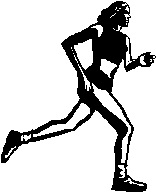It’s running season! This time of year the trails along the Hudson are more and more full each morning as the weather warms and the sun rises earlier. I find myself watching every runner and their gate completely mesmerized by the mechanics and how different they are person to person. And truthfully, it takes a lot of self-restraint not to stop most of them to align them! I can see the pain they are in (or will be in) with just a few steps as they pass by.
I received so much feedback on the last gait article, I thought we should explore more angles of running and gait. I’m going to share with you a few common gait patterns I see a bit later in this article. But first, let me put on the record that running is a full body conditioning exercise with benefits as long as this paper.
I’ve worked with marathoners as they prepare for their next big race and from what I can tell, the power of running is much like an addiction – a healthy one, but one that cannot be quenched with any other activity.
Each person is as individual as a snowflake, but there are some general things to look for:
• Are you able to stand on one leg, toes forward, without wobbling or hiking your hip? If not, 40% of your running and walking gait is compromised (gait is a balance activity after all).
• Can you stand in place and bring each knee to your belly button and in line with your middle without struggle? If not, you may not be engaging your hip flexors appropriately.
• Lastly, when standing do you have enough hamstring force to kick your heel to your bum? If not, your stride is most likely thwarted.
• And of course you must be using your gluteus maximus as was outlined in our last article.
If you’re unsure of your gait and alignment, have it checked by a therapist with a trained eye for movement. Or send me a video of you running, I’ll check it out and get back to you!
Keeping in stride!
Developer of The Schatz Method™
Facebook <—- are we connected? —> LinkedIN

